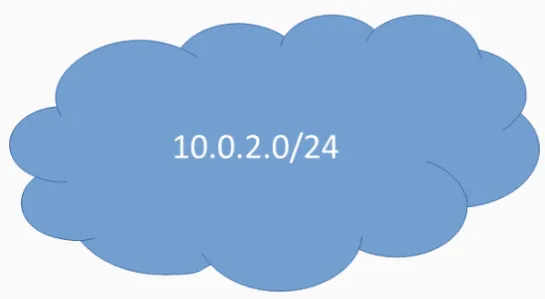In this section, you will learn the foundations of networking in Linux. Everything about networking is within the classic domain of Unix and Linux, and, in fact, the old Unix folks do say that Unix has been created for network communication. Linux is considered one of the best systems to use, learn, test, play, diagnose, and troubleshoot computer networks because a lot of great tools are available in Linux for free and come right out of the box, or just need a single command to install. There's a lot to learn about the subject of computer networks, and here we can only teach you the fundamentals of it using the CentOS 7 Linux operating system.
Now, let's learn about computer networks from 10,000 up. The two most fundamental concepts in networking are the network, or subnetwork, and the IP address. The three most important facts every Linux user needs to know are the network, or sometimes called the subnetwork, the IP address, and the rules of the network:
Every network, or sometimes called subnetwork, has a so-called network address consisting of only numbers, which looks like this:
Every computer needs an IP address for communication, which is part of a subnetwork's address. In our example, the first three numbers divided by dots are the same between the IP addresses and the network address:
The easiest way for network communication between two or multiple computers is to connect them physically (for example, by using network cables and a single switch), and then put them in the same network, which means choosing all of the computers' IP addresses from the same range as our subnetwork's network address. In our example, choose 10.0.2 as the first three digits for all our IP addresses. As you can see, only the last digit is variable. Every computer that wants to talk to another computer in the same network then only needs the correct IP address of the recipient. This is also the basic setup of almost all private networks you may have at home:
As we have just learned, for normal network communication, all participants need to be in the same network. If this was all there was to networking, we would have to stop here and modern communication and the World Wide Web would not exist. The reality is that there are millions of networks connected together around the globe, such as our own private one, which are all connected through routers. If you want to communicate with another machine in your network or any other network, your computer needs to have a so-called IP routing table that defines static routes or the next hop towards a particular destination. This IP routing table is part of every Linux operating system. For example, if we have a private network consisting of three subnetworks with the following IP network addresses, if you want to get into contact with another computer in your subnetwork, your routing table could work the following way. If there is an entry in the table that defines what to do if someone wants to access the IP address of the 10.0.2.0 subnetwork, for example, with the IP 10.0.2.15, there is a route entry in the table that defines that you should hop to the 10.0.2.0 network:
The same happens if you want to access the machine with the IP address 192.168.122. Because there is an entry in the table, the routing table will hop to the 192.168.1.0 network that this computer is part of:
For all the other IP addresses where there is no explicit rule, the so-called default route will be used. In most private networks, the default rule is the IP address of a real hardware router, which basically is the same as an IP routing table, but which can do more, as it is connected to other routers around the globe where it will find its way to the correct destination address:
This is also called dynamic routing, as the router or path between the source and the destination can vary depending on which routers it will use. Normally, each private network that most internet service providers offer has only one public IP address that connects to the public internet:
All machines from our private network need to go via this router, with its single public IP address, if they want to communicate with other computers in the public internet.
On the other hand, if an outside public machine from the internet wants to access the private computers from our subnetwork, the router needs to handle the correct delivery of messages to the correct recipient, which has an internal IP address only visible within our private network.
But how can you define an IP address for a computer? The IP address needs to be set on an OS level in the correct configuration location associated with a certain network interface:
But, as mentioned before, the IP addresses need to be unique in the same subnetwork; otherwise, the correct recipient for a network message cannot be found.
So, how can you take care of that? The first approach is to manually manage a list of computers and all free and reserved IP addresses available in this network. Here, we need to assign static IP addresses, which means every computer gets an IP address hardcoded into the system, which will not change and remain stable:
Often, important services in networks, such as a mail or web server, have a static IP because they must be reacha...









